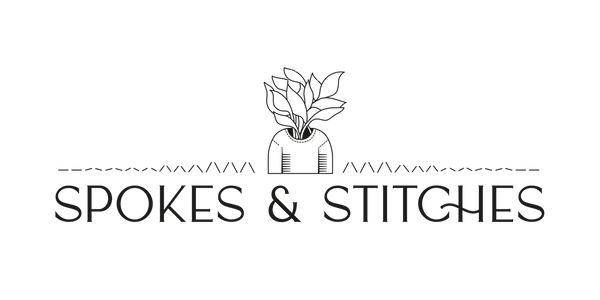Last week I published a blog post about solarpunk, and how this artistic movement inspires me as a custom designer, patternmaker, and sewist.
Solarpunk is defined by Solarpunk Magazine as “a movement that envisions what the future might look like if humanity solved major modern challenges like climate change, and created more sustainable and balanced societies. As a genre and cultural aesthetic, it encompasses literature, visual art, fashion, video games, architecture, and more.”
A lot of the solarpunk narrative overlaps with what we might think of as the modern slow fashion movement.
Good On You, a directory of ethical fashion brands, defines slow fashion as “the opposite of fast fashion. [Slow fashion] encompasses an awareness and approach to fashion that considers the processes and resources required to make clothing. It advocates for buying better-quality garments that will last longer, and values fair treatment of people, animals, and the planet along the way.”
So is there a difference, or do both terms mean the same thing?
My feeling is both yes and no.

Slow fashion, as a term, is reactionary.
It is literally defined in opposition to the current status quo of the fashion industry: careless pollution and cruel labor exploitation for the sake of churning out cheap disposable clothing that no one really wants. It estimated that many fashion brands overproduce by up to 40%, and 85% of all textiles are put into landfills annually!
If fast fashion ever goes away (whether through policy change, international government action, or some other major disruption), will slow fashion become the new normal, and will we still think of it as “slow”? And does slow fashion go far enough to envision a better fashion future?
Personally, I think solarpunk is a much more alluring prospect when it comes to fashion’s future.
To me, solarpunk isn’t just about reducing pollution and pushing for factory workers to be paid a living wage. It isn’t just a global capitalist model of clothing production but made a little bit “nicer.” Solarpunk dares us to dream bigger, to think about the energy that powers production (both electric and human), and to think beyond the model of factory production entirely.
Solarpunk also encourages joy and fulfillment in the creative process. The Industrial Revolution transformed most clothing production into a tedious labor gig, shifting focus from craftsmanship to efficiency and output. Not that long ago in the US (and still prevalent in many other countries), tailoring and custom clothing design was/is a sought-after and well-respected profession.
As someone who has done a small amount of batch-production (in a very cottage-industry living-room-turned-temporary-manufacturing-space context), I can tell you with certainty that it is no fun at all to sew the same seam 100 times in a row for the sake of efficiency.

Once you begin producing anything at scale, the process ceases to be creatively fulfilling in any way.
Suddenly it’s all eyes on the clock, an uncomfortable tension as you find your brain calculating the shortest possible distance to reach for your scissors to cut the thread between repetitive motions. It sucks!
I love sewing, but I really dislike production. I’m not saying that there isn’t a place for mass-production as a practice. It makes sense for a lot of industries, and may even be necessary at this point to meet global demand for essentials like food or vaccines... but clothing just really doesn’t need to be produced at its current quantities. On top of that, most of the clothing being churned out is poor quality, only fits the smaller half of the population, and is manufactured in excess with the ultimate goal of being disposed of and replaced as quickly as possible.
I don't think slow fashion is bad, but I don't think it goes far enough to imagine an alternative consumer relationship to clothing. The concept of slow fashion to me conjures the image of factory workers high-fiving on lunch breaks because the boss is paying a living wage.
Slow fashion focuses on being “better” than fast fashion, but it still overlooks the potential for joy in the creative process.
It focuses on the redemption of the consumer moreso than the creativity of the maker. It still encourages us as consumers to want what we’ve already seen rather than envision something (with the help of a creative) that doesn’t exist yet.
Solarpunk, to me, offers an alternative approach to fashion that is more about the partnership between the maker and the client.
It’s about getting inspired by the individual, and the exchange of energy as something totally unique and precious is manifested. The human brain craves variety, it thrives on problem-solving for different challenges.
Turning clothing design and production (or at least a good chunk of it) back into an enjoyable art form, rather than diluting it down into a paint-by-numbers series of steps outlined in a tech pack and sewing pattern for a team of factory workers, is a transformation that I would personally love to see in my lifetime.


2 comments
I may be biased but I do love all your writing and your creativity!!
Thank you for giving a voice to the fact that those who make our clothes deserve to feel creative, to feel joy! Some people really do love sewing the same seam over and over again and making batches – but loads of us don’t! Great post, and I am so excited to be reading your blog!